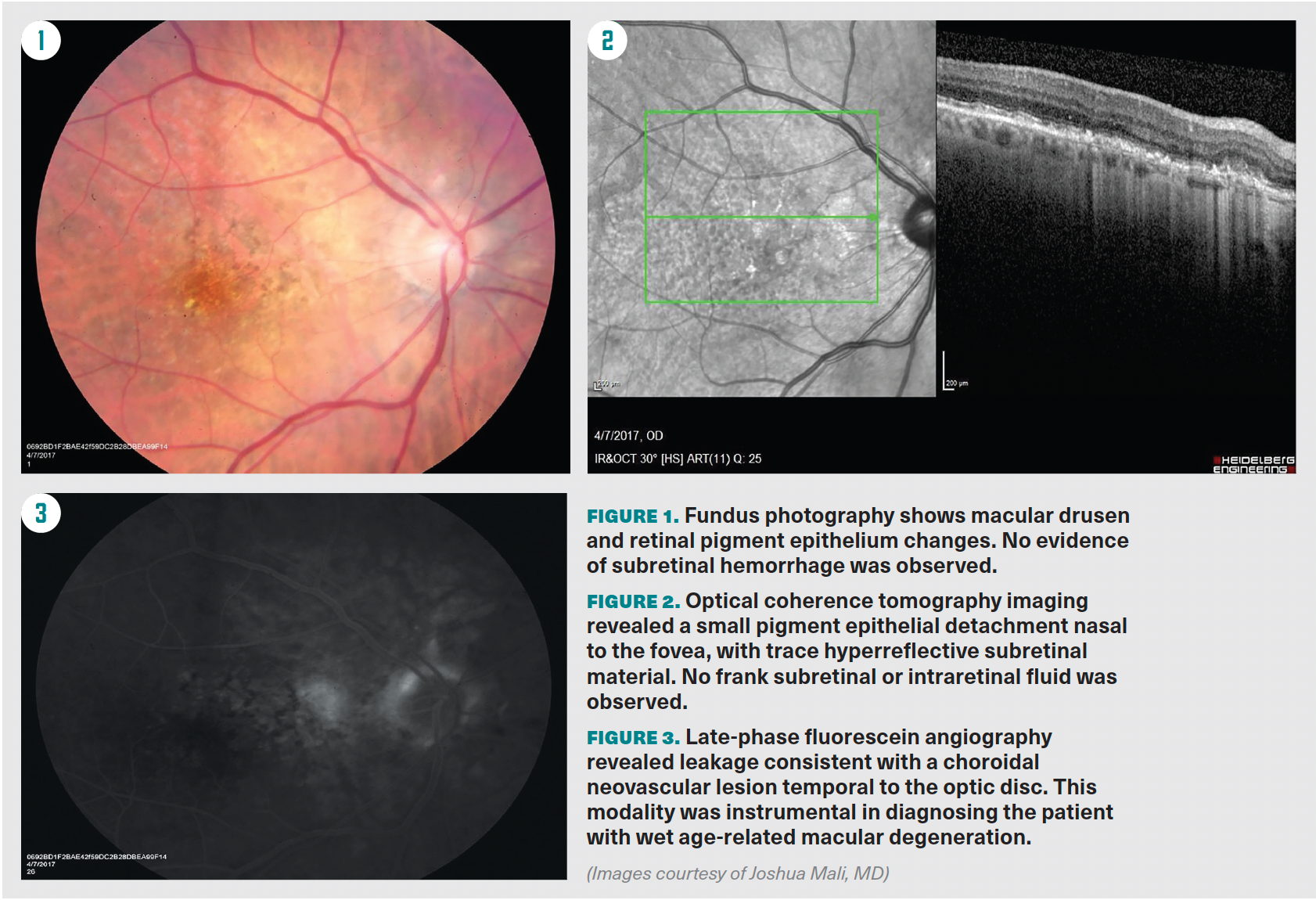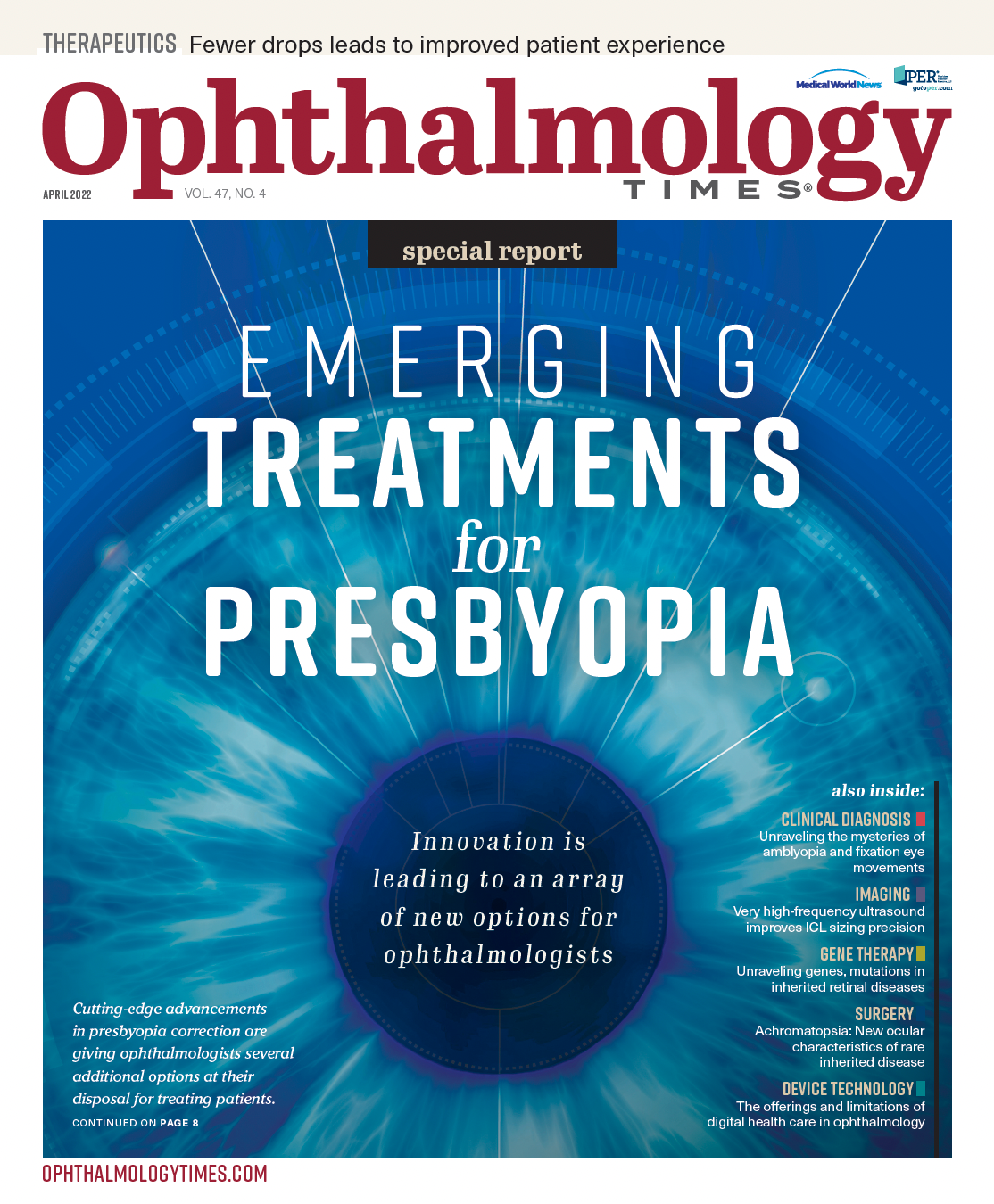Publication
Article
Digital Edition
The offerings and limitations of digital health care in ophthalmology
Author(s):
Over the past 2 years, retina specialists and their patients have learned how AI may be a tool physicians can use to monitor patients for disease progression, how telemedicine might mean more than a mere video chat between patient and clinician, and how the tools of the 21st century were closer to real-world practice than anticipated.
Special to Ophthalmology Times®

Before the COVID-19 pandemic, retina specialists had limited experience with artificial intelligence (AI) and digital health care, which can include services such as telemedicine. Interactions with AI in retina were perceived as something—although feasible—best kept for future implementation. Digital health care was a vague term, pregnant with promise but lacking a clear use case for daily patient interactions. However, over the past 2 years, retina specialists and their patients have learned how AI may be a tool physicians can use to monitor patients for disease progression, how telemedicine might mean more than a mere video chat between patient and clinician, and how the tools of the 21st century were closer to real-world practice than anticipated.
Applications of digital health care differ from specialty to specialty, and patient expectations and appetites for digital offerings may vary based on personal experience. It behooves modern retina specialists leveraging digital health care in their clinics to ensure patients understand what the benefits and limitations of digital health care are in retina.
Digital health care in retina
The increasing ubiquity of technologic platforms replacing analog mediums—from QR codes replacing printed restaurant menus to Zoom conferences in lieu of in-person meetings—has resulted in many retina patients feeling more comfortable with the concept of digital medicine. Even among our retired patients, whose lives may be less dictated by video conferencing than their working-age counterparts, the learning curve for digital interfacing has been flattened. This means that an aversion to digital medicine, one of the pre-2020 challenges faced by retina specialists who wished to implement AI-based services into their care models, has been erased.
Still, some retina patients may have unrealistic expectations about how digital health care can alleviate the burden associated with retinal diseases, such as wet age-related macular degeneration (AMD). Although the point is obvious to clinicians, I sometimes remind my patients I cannot perform a comprehensive eye examination via video conference and am unable to evaluate visual function based on subjective self-reported assessment. For some conditions, telemedicine’s limitations mean in-office examinations remain the standard for evaluation. For other conditions, digital options offer cutting-edge health care. Consider the example of a patient with dry intermediate AMD. In a more analog age, such a patient would be handed an Amsler grid and instructions to call the office if the grid’s uniform pattern became distorted, as a change might indicate a conversion from intermediate to wet AMD. This model could be prone to lack of adherence and a misunderstanding of instructions and places the burden of initiating care on the patient.
If that same intermediate AMD patient was referred to the ForeseeHome AMD Monitoring Program (Notal Vision), they would be enrolled in a modern AI-based digital health care framework. After a referring physician determines a patient with dry intermediate AMD is well suited for home monitoring, the Notal Vision Monitoring Center, which is the provider of the ForeseeHome AMD Monitoring Program, works with the patient to set up the device, teaches the patient how to perform daily preferential hyperacuity perimetry tests, and serves as a troubleshooting liaison. Patient adherence is watched by the monitoring center, and patients who are not regularly performing at-home tests are contacted by the center to ensure no hardware problems or other health care issues are interfering with consistent evaluation.
Results of routine at-home testing are sent to the Notal Vision Monitoring Center, which relies on an AI algorithm to detect aberrations in patient performance that might indicate a conversion from intermediate to wet AMD. If AI flags the patient’s test results, an in-house ophthalmologist reviews the report and pings the referring physician’s office if it is determined that the referring physician should be alerted. That office may then reach out to the patient to schedule an in-person examination to see whether conversion to wet AMD has occurred.
In this digital health care model, a patient with intermediate AMD receives routine AI-based monitoring services while outside the clinic in addition to the regularly scheduled visits they have with their provider. Retina specialists should note that a Medicare-covered home monitoring program is not a stand-in for clinical examination, but a digital supplement to in-person visits as the medium of extra care.
Real-world example
The real-world case of a 75-year-old woman named J.B. illustrates the value of home monitoring for wet AMD conversion. J.B. was a patient with intermediate AMD OD and wet AMD OS, which was treated with aflibercept (Eylea, Regeneron Pharmaceuticals, Inc). Visual acuity (VA) measured 20/30 OD and 20/150 OS at her most recent visit. Given that she was a high-risk patient with intermediate AMD and a history of wet AMD in the fellow eye, I referred J.B. to the Notal Vision Monitoring Center for enrollment in the ForeseeHome AMD Monitoring Program.
Six months after initiating at-home monitoring, my office received an alert that J.B.’s most recent test flagged her for possible conversion to wet AMD OD. My office scheduled an examination, at which point I found that her VA remained stable at 20/30 OD. Fundus photography revealed macular drusen and changes to the retinal pigment epithelium and did not show evidence of subretinal hemorrhage (Figure 1). Optical coherence tomography imaging revealed only borderline findings (Figure 2). Fluorescein angiography depicted a small choroidal neovascular membrane temporal to the optic disc that did not involve the central macula (Figure 3). I gave J.B. a diagnosis of wet AMD based on these findings. Initiation of aflibercept therapy resulted in stable VA of 20/25 OD.

Home-based monitoring detected asymptomatic conversion to wet AMD from intermediate AMD in J.B. while VA was at least 20/40, which is particularly good news when one considers the findings of a 2020 real-world study that found that detecting wet AMD before VA dips below 20/40 is key to maintaining 20/40 vision after 1 or 2 years of anti–VEGF therapy. In the case of J.B., detection of wet AMD might have occurred after she passed the 20/40 VA threshold if not for use of the ForeseeHome AMD Monitoring Program.
Embrace digital health care
Digital health care offerings frame your practice as a cutting-edge institution that prioritizes the latest in retina care. Although some of your patients might have a different concept of what digital health care looks like, educating them on the parameters of telehealth vis-à-vis retina care will set reasonable expectations. Implementation of digital health care platforms, such as the ForeseeHome AMD Monitoring Program, allow your practice to leverage the power of AI to offer care outside of your clinic, thereby launching your practice into the future.
Reference
1. Ho AC, Kleinman DM, Lum FC, et al. Baseline visual acuity at wet AMD diagnosis predicts long-term vision outcomes: an analysis of the IRIS registry. Ophthalmic Surg Lasers Imaging Retina. 2020;51(11):633-639. doi:10.3928/23258160-20201104-05
Joshua Mali, MD
E: malienterprisesglobal@gmail.com
Mali is a board-certified ophthalmologist and award-winning vitreoretinal surgeon at The Eye Associates, a private multispecialty ophthalmology practice in Sarasota, Florida. He is also the retina medical director of the Macular Degeneration Association and the founder and CEO of Mali Enterprises (www.malienterprises.org)

Newsletter
Don’t miss out—get Ophthalmology Times updates on the latest clinical advancements and expert interviews, straight to your inbox.




